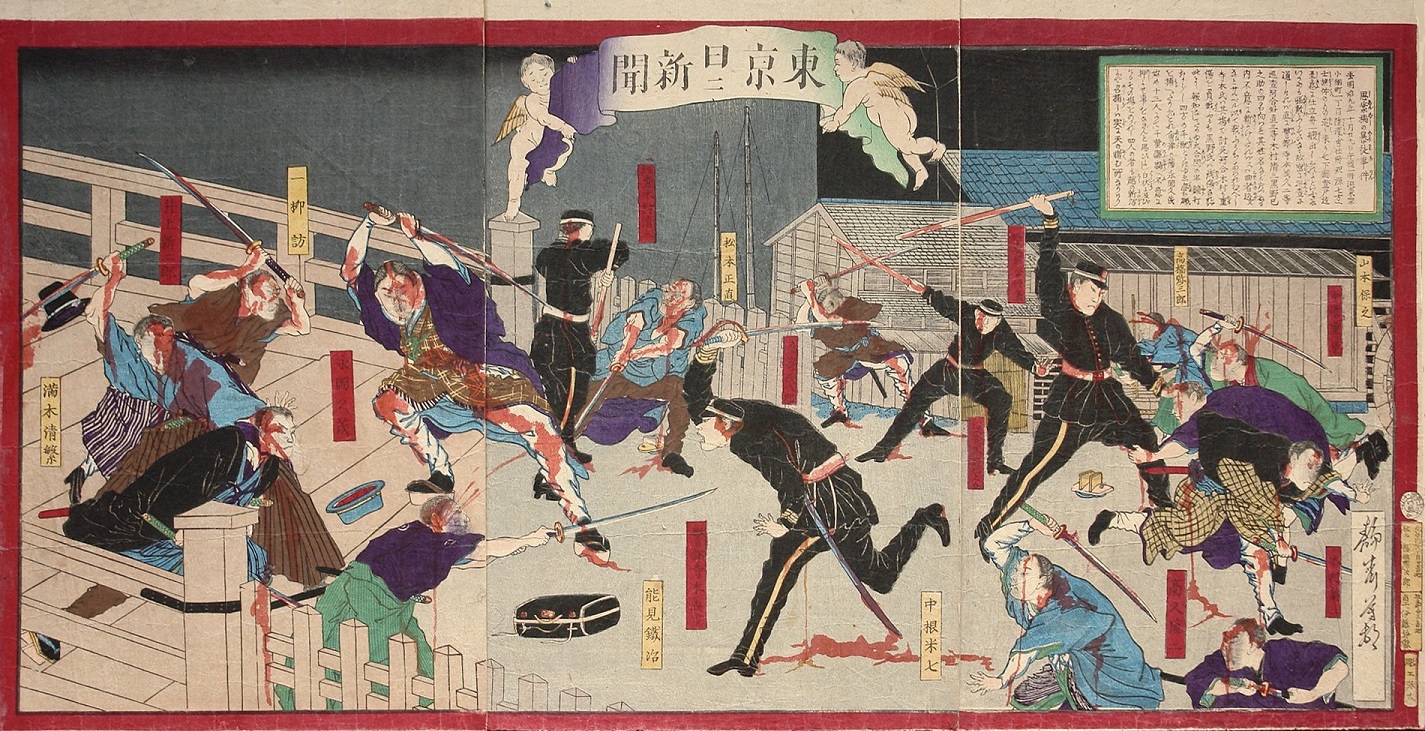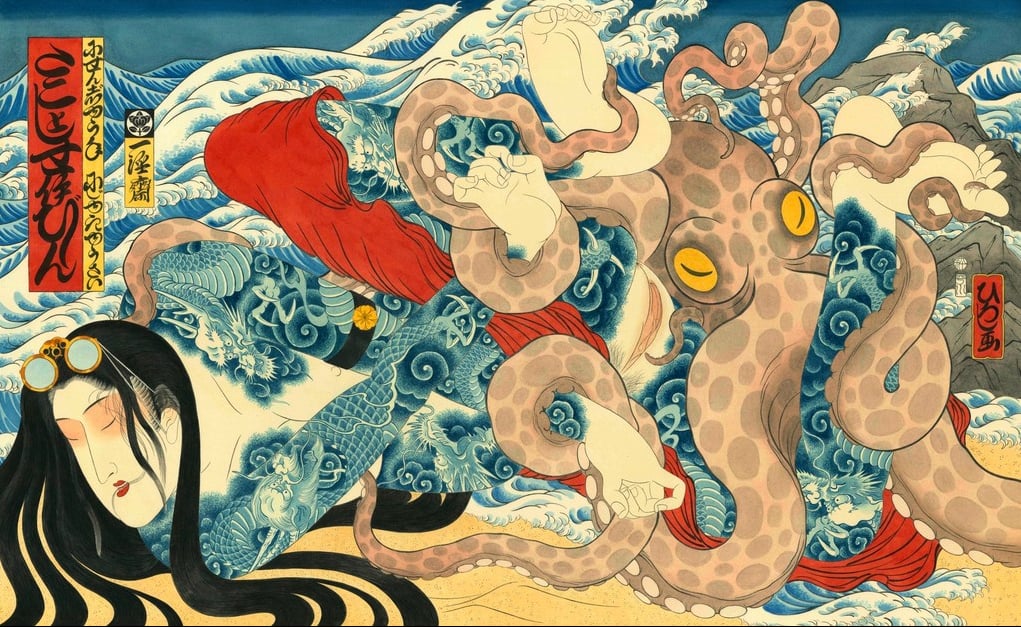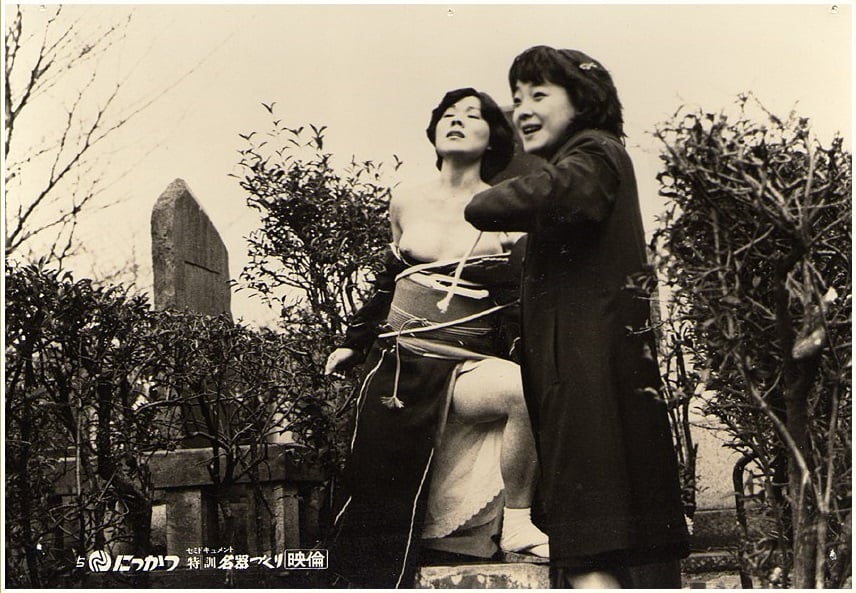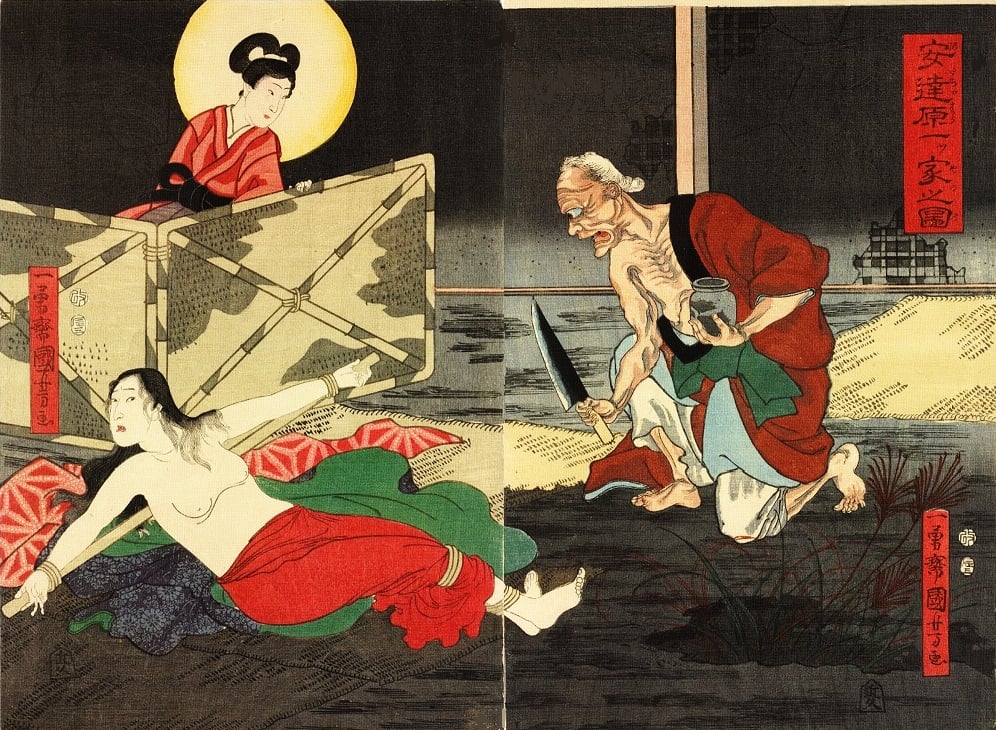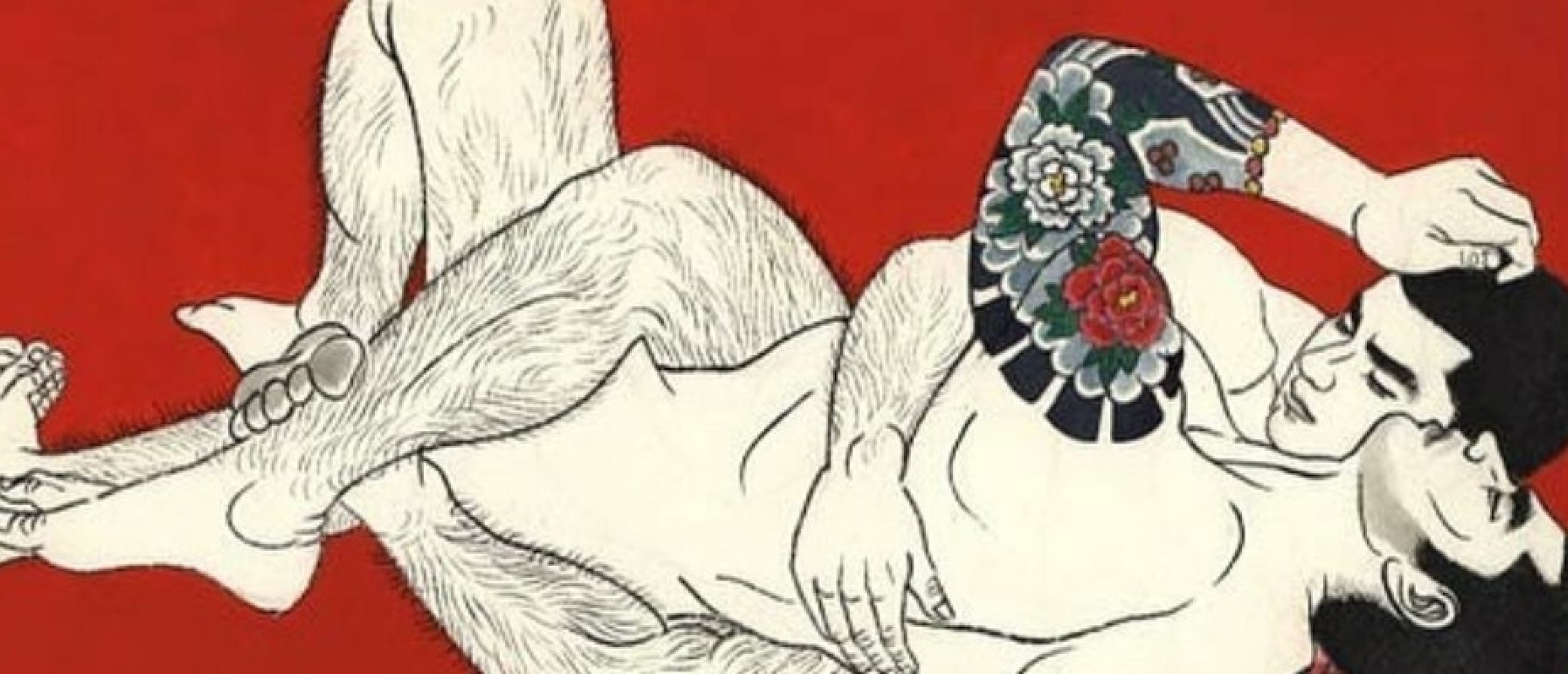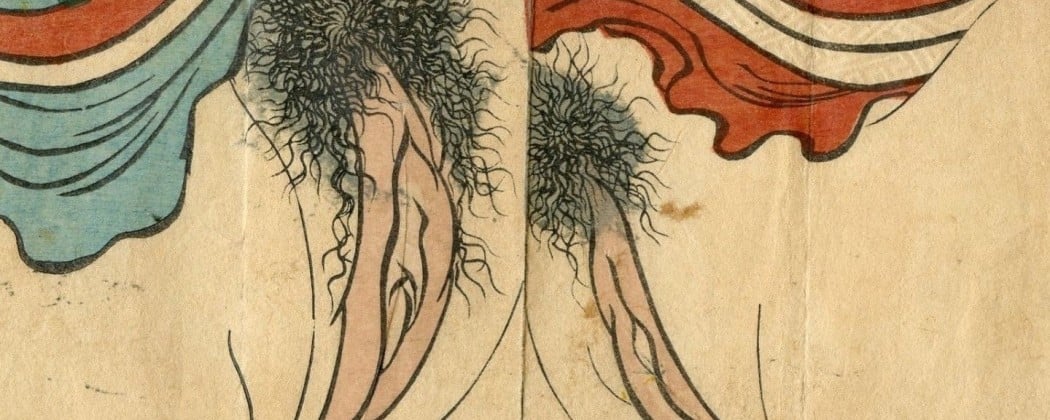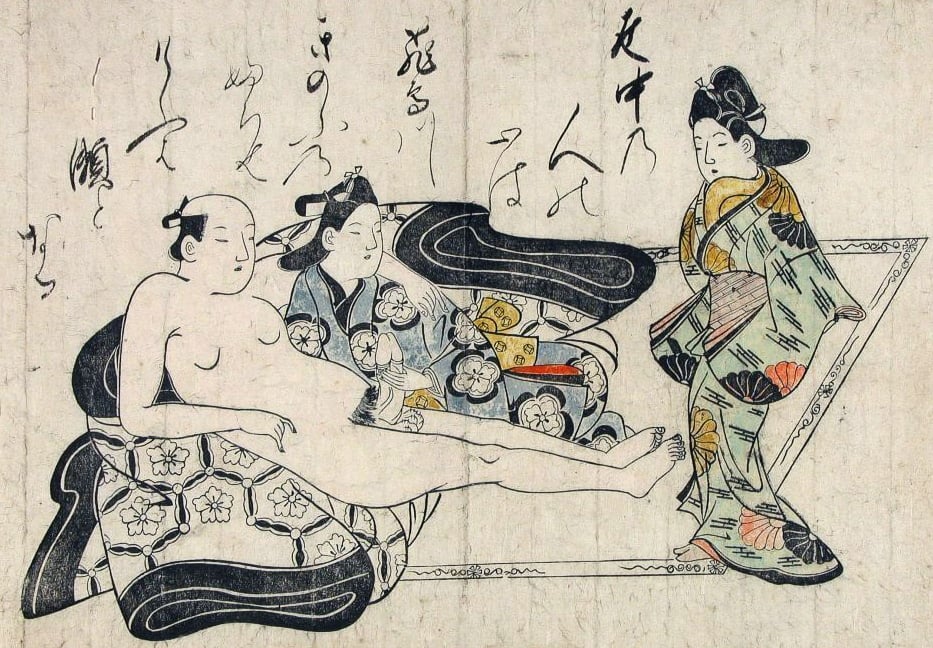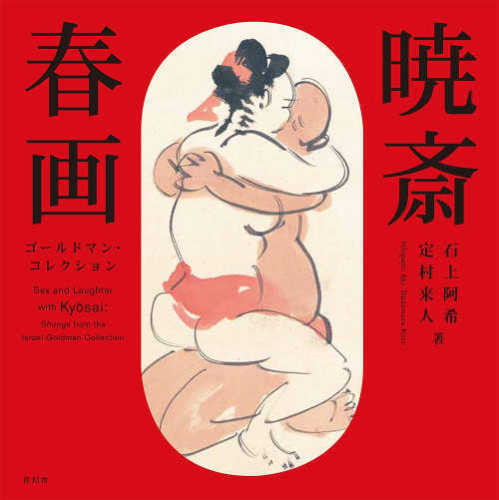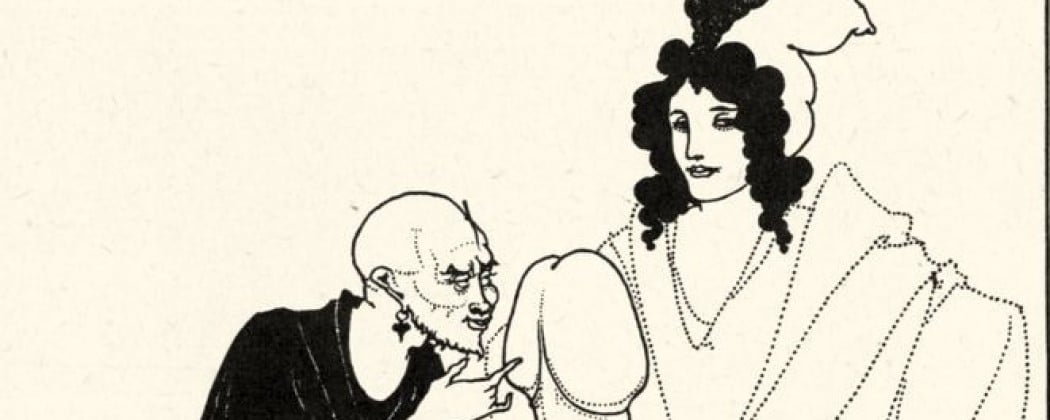
Between 1866 and 1868, the sublime Meiji artist Tsukioka Yoshitoshi (1839-1892) created a set of very disturbed and disquieting designs. The most sadistic of these bloody pictures (muzan-e) are to be found in a series called ‘Eimei nijuhasshuku (Twenty-eight Famous Murders with verse)‘. He coproduced it with Utagawa Yoshiiku (1833-1904).
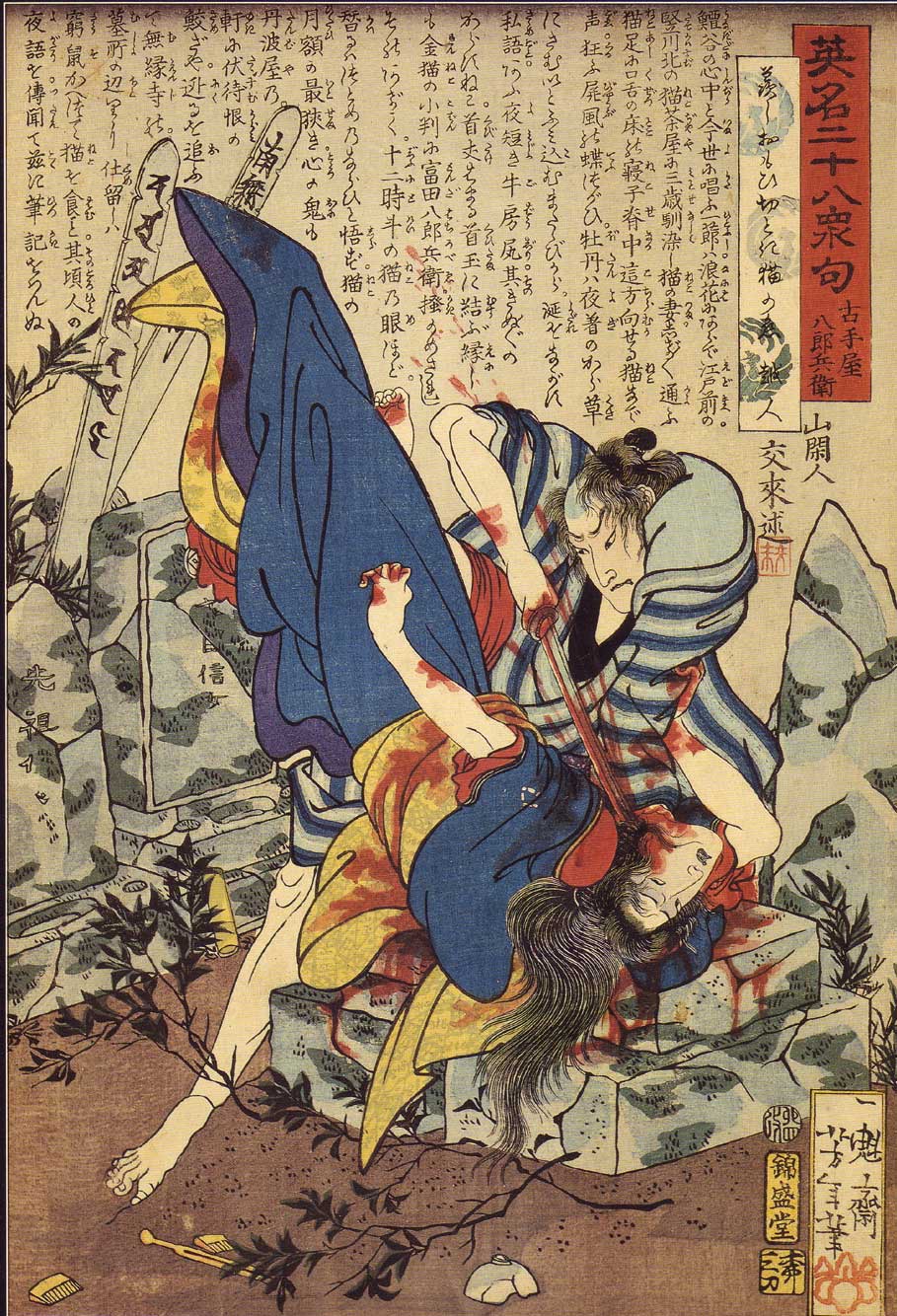
‘Furuteya Hachirōbei killing a woman in a graveyard‘ (published 4/1867) from the series ‘Eimei nijuhasshuku (Twenty-eight Famous Murders with verse)‘
Decapitation
These prints were a best-seller with each design illustrating a killing in cruel undisguised detail. Some of them portray the stabbing or decapitation of women, with bloody handprints on robes accentuating the intimacy of their battle.
“Thickened” Realism
During the printing process glue mixed with red pigment has been added that gives the blood on the prints a “thickened” realism. His bloody pictures have made Yoshitoshi notorious both in Japan and the West.
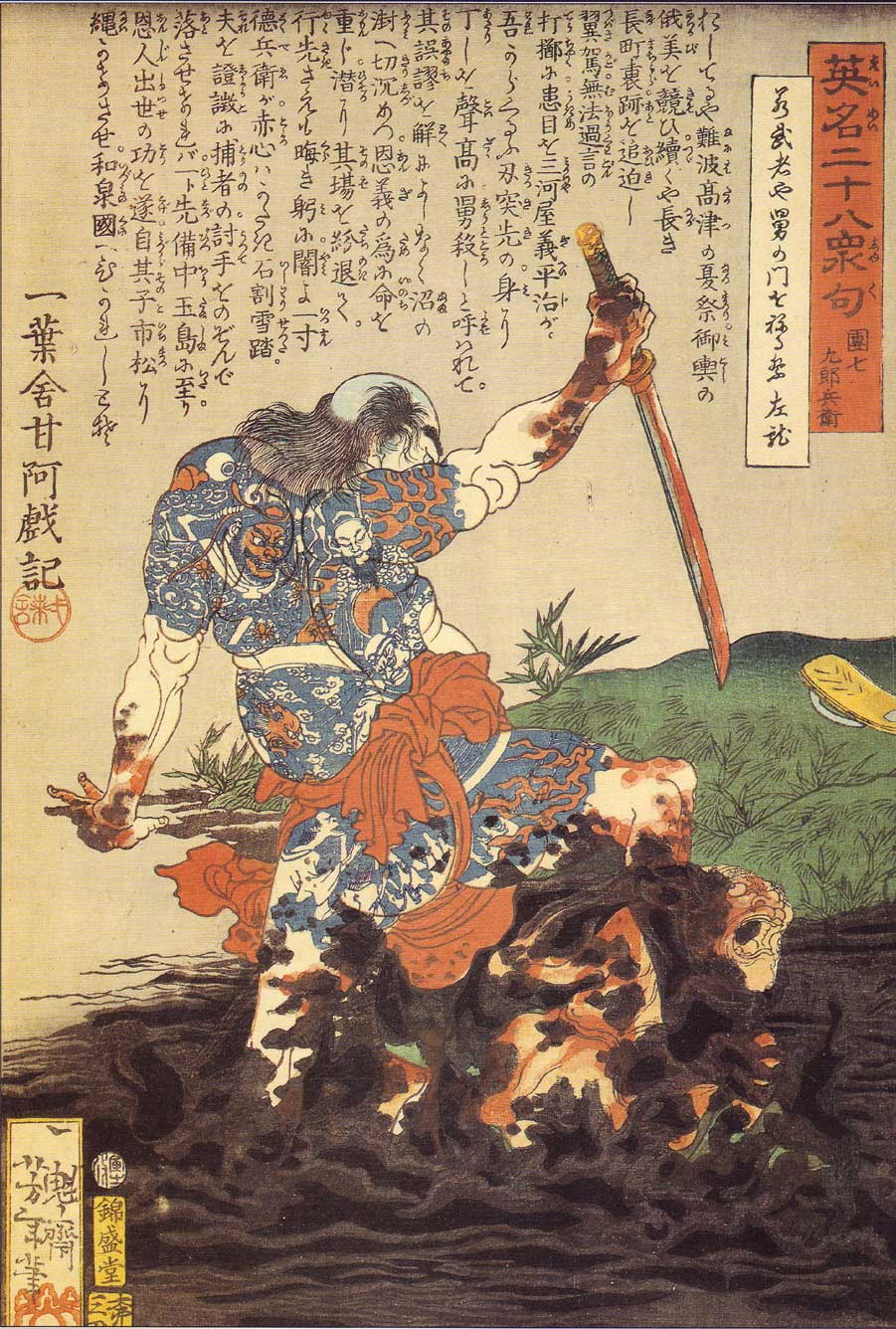
‘Danshichi Kurobei killing an old man in the mud‘ (12/1866) from the series ‘Eimei nijuhasshuku (Twenty-eight Famous Murders with verse)‘
Impact
Writers like Kawabata Yasunari (1899-1972), Tanizaki Junichiro (1886-1965), and artists like Yokoo Tadanori (b.1936) and Masami Teraoka (active in the U.S.), have all acknowledged the impact that Yoshitoshi’s violent prints had on them. The writer Akutagawa Ryunosuke (1892-1927), the “father of the Japanese short story”, described how he could not sleep at nights after looking at the ‘Twenty-eight Murders‘ designs. One of the short stories he wrote called Rashomon was based on the series.
Horror
Yoshitoshi lived during a time were horror and cruelty were a much discussed topic in the popular culture of the first half of the nineteenth-century in Japan. This was echoed in kabuki and noh plays, literature, and woodblock prints by artists such as Hokusai, Kunisada, and Kuniyoshi.
Sadism
Aesthetic deliberations of composition and draftsmanship are a dominant attraction of Yoshitoshi’s work but also his passion and his energetic involvement with his subjects. This involvement not only broadened to the sadism of his bloody pictures but also to the composure and psychological understandings of his later work.
Shocking
The reputation of Yoshitoshi’s bloody pictures is justified because he did produce shocking images more effectively than any other print designer.
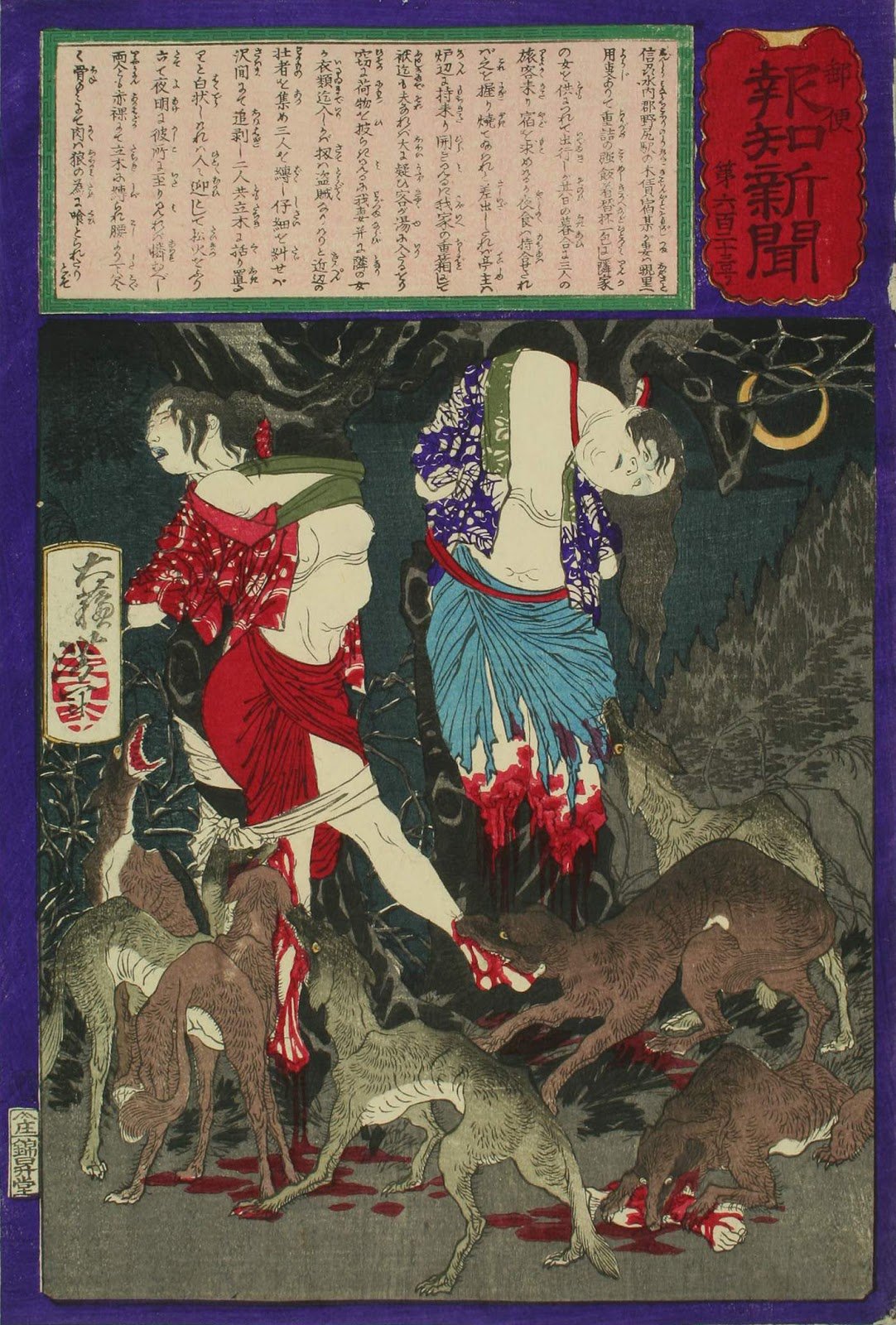
I am grateful for some of the pictures in this article to the sites bizarreandgrotesque.com and yoshitoshi.net
Click HERE for Yoshitoshi’s most shocking print design!
Source: ‘Beauty & Violence, Japanese Prints by Yoshitoshi 1839-1892′ by Eric van den Ing and Robert Schaap

